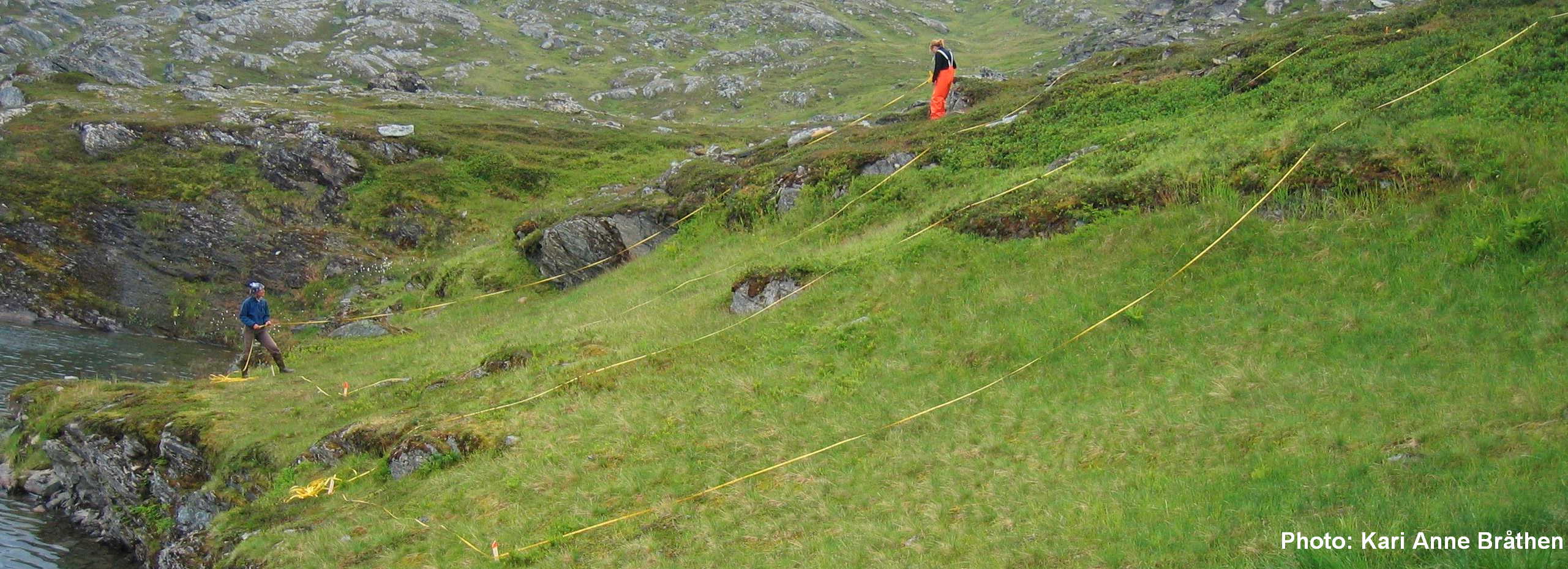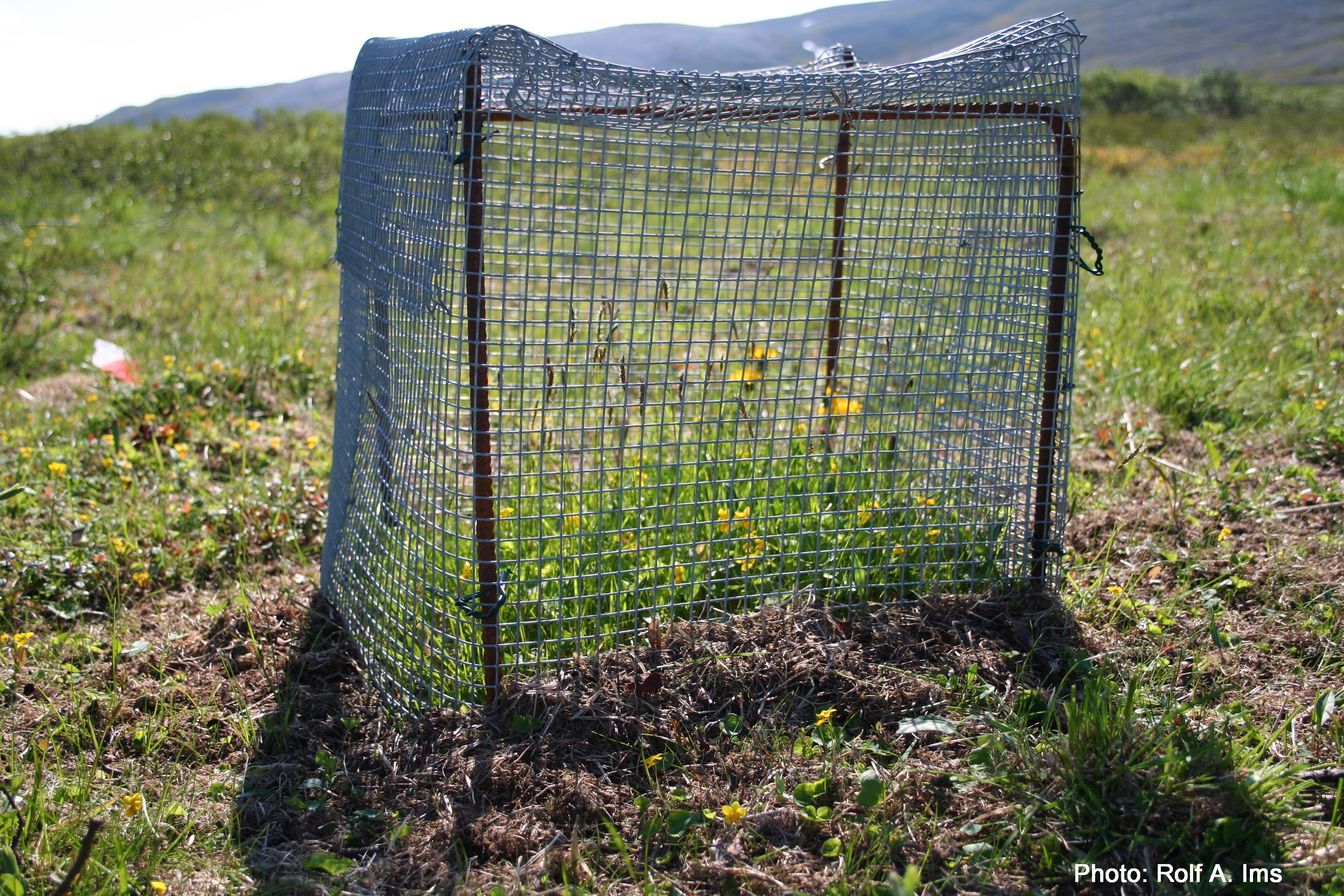Effects of reindeer grazing on sub-arctic plant diversity Ph.D.-Project: Virve Ravolainen |
|
Plant diversity and grazing animals I study the effect of reindeer density differences on plant diversity in reindeer summer pastures. One can approach plant diversity as for example number of plant species in a given area, or as dominance or evenness of different plant species. Grazing animals can affect all these different qualities of vegetation. In some cases increased grazing intensity can cause an increase in number of plant species or an increase in vegetation heterogeneity, while in other situations diversity will be reduced with increasing grazing intensity. Theoretically, one may expect intermediate grazing intensity to cause the greatest plant diversity. It is, however, often not straight forward to determine what might be intermediate grazing intensity. Further, many factors apart form grazing will determine how increased grazing intensity affects diversity, among others species composition of the grazing grounds and supply of water and nutrients to the plants. Therefore, grazer induced diversity changes are dependent on ecological context. |
Studying the plant diversity on one of the sites |
Reindeer effect on plant diversity in lee sides and snow beds in Finnmark I have studied the effect of reindeer density differences on plant diversity in habitats that are assumed important for reindeer grazing; lee sides and snow beds. This study was carried out at multiple spatial scales ranging from small sampling plots to whole districts. It was carried out in the coastal mountains of Finnmark in 6 summer grazing districts differing in their history of grazing through the past twenty years. We found little effect of reindeer density on plant diversity (quantified as Simpson diversity) in these habitats, on the contrary to our expectations based on theory and previous studies by other researchers. We focussed specifically on whether reindeer impact might be detectable at a given spatial scale, and found a certain scale-dependency in how reindeer change the vegetation. Further, we found that shrubs such as crowberry ( Empetrum nigrum ssp. hermaphroditum ), dwarf birch ( Betula nana ), bilberry ( Vaccinium myrtillus ), and dwarf willow ( Salix herbacea ) were the most abundant species contributing the most to the plant diversity. Previous studies by others have shown that grasses and grassy species can increase in abundance when grazing intensity increases, but our findings are on the contrary to this, even though one might expect this kind of positive effect of grazing to occur in lee sides and snow beds. In habitats with a relatively good supply of water and nutrients, such as our focal habitats, and seen at large geographical extent it seems that reindeer density has little effect on plant diversity.
Reindeer can also affect vegetation in their grazing grounds by changing the diversity of species in the seed bank. Therefore, I also study whether reindeer change the relation between existing vegetation and the seed bank. One might expect that where reindeer densities have increased, there would be larger differences between vegetation and seed bank. This study was conducted in the habitats described above, and the results are currently being processed. |
|
Studying the effect of reindeer grazing on lee sides and snow beds |
|
Plant diversity and animals in willow thickets |
|
Another part of my work includes studies in habitats surrounding willow thickets, these being habitats that are considered to be very important for many plants and animals in a tundra ecosystem. I study plant diversity and biomass in relation to willow thicket fragmentation and biological activity surrounding these thickets. In a part of this willow study, together with master student Julie Orvik Kollstrøm, I study the effect of reindeer and small mammalian herbivores on recruitment of willow thickets. The impact of animals is provided through co-operation with project “Fjellrev i Finnmark” . Animal densities are monitored and vegetation in permanent sampling plots is protected against grazing animals with small enclosures. Field studies are on-going at the Varanger-peninsula. |
Plants protected against grazing animals with small enclosures |

